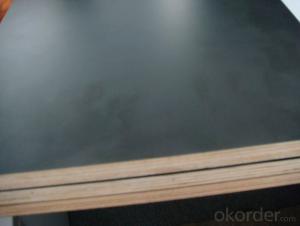When it comes to woodworking, the thickness of the material you choose can make all the difference in the world. This is especially true when it comes to plywood, a versatile and widely used material in a variety of projects. One of the most common types of plywood you’ll come across is 1/4 inch plywood, also known as ‘quarter inch’ plywood. But what makes this particular thickness so special? Let’s dive in and find out.
The Beauty of 1/4 Inch Plywood
Plywood is made by gluing together thin layers of wood veneer, with the grain of each layer positioned at right angles to the adjacent layers. This cross-graining construction gives plywood its strength and resistance to warping. 1/4 inch plywood, with its 6.35mm thickness, is a popular choice for many DIY enthusiasts and professionals alike because of its balance of strength, workability, and affordability.
Versatility in Use
Whether you’re building furniture, creating cabinetry, or working on a renovation project, 1/4 inch plywood can be the perfect material for your needs. It’s strong enough to handle the weight of most household items but thin enough to be easily cut and shaped. This makes it ideal for projects where precision and detail are key.
Easy to Work With
One of the biggest advantages of 1/4 inch plywood is its workability. It can be cut with a variety of tools, including hand saws, power saws, and even a sharp utility knife. This makes it accessible to woodworkers of all skill levels. Additionally, it can be sanded, drilled, and painted, allowing for a high degree of customization in your projects.
Affordability
Plywood is known for being a cost-effective option compared to solid wood. 1/4 inch plywood is no exception. It offers a great balance of quality and price, making it an attractive choice for those on a budget. You get the benefits of plywood’s strength and durability without breaking the bank.
The Challenges of Working with 1/4 Inch Plywood
While there are many benefits to using 1/4 inch plywood, there are also some challenges to be aware of.
Stability Issues
Due to its thinness, 1/4 inch plywood can be more susceptible to warping and twisting, especially if not properly stored or if exposed to moisture. It’s important to handle and store this material with care to maintain its integrity.
Limited Structural Strength
Although 1/4 inch plywood is strong for its size, it doesn’t have the same structural strength as thicker plywood options. This means it may not be suitable for heavy-duty applications or as a primary support in load-bearing structures.
Environmental Factors
Plywood, including 1/4 inch, can be affected by environmental factors such as humidity and temperature changes. These can cause the plywood to expand or contract, which may lead to warping or other structural issues over time.
Tips for Working with 1/4 Inch Plywood
To get the most out of your 1/4 inch plywood, here are some tips to keep in mind.
Proper Storage
Store your plywood in a dry, cool place to prevent warping and other damage. If you’re storing it for an extended period, consider laying it flat and adding a small amount of weight on top to help maintain its shape.
Use the Right Tools
Invest in the right tools for the job. High-quality saws and cutting tools will make it easier to work with 1/4 inch plywood and will result in cleaner, more precise cuts.
Finishing Touches
Don’t forget to finish your plywood projects properly. Sanding, sealing, and painting not only protect the plywood from moisture and other damage but also enhance its appearance.
The Impact of 1/4 Inch Plywood on Your Projects
The choice of 1/4 inch plywood can have a significant impact on the outcome of your woodworking projects. From its ease of use to its affordability, it’s a material that offers a lot of benefits. However, it’s also important to be aware of its limitations and to work with it in a way that maximizes its strengths and minimizes its weaknesses.
In conclusion, 1/4 inch plywood is a fantastic material for a wide range of woodworking projects. With its balance of strength, workability, and affordability, it’s no wonder that it’s a favorite among many woodworkers. By understanding its properties and how to work with it effectively, you can create beautiful and functional pieces that will stand the test of time.

